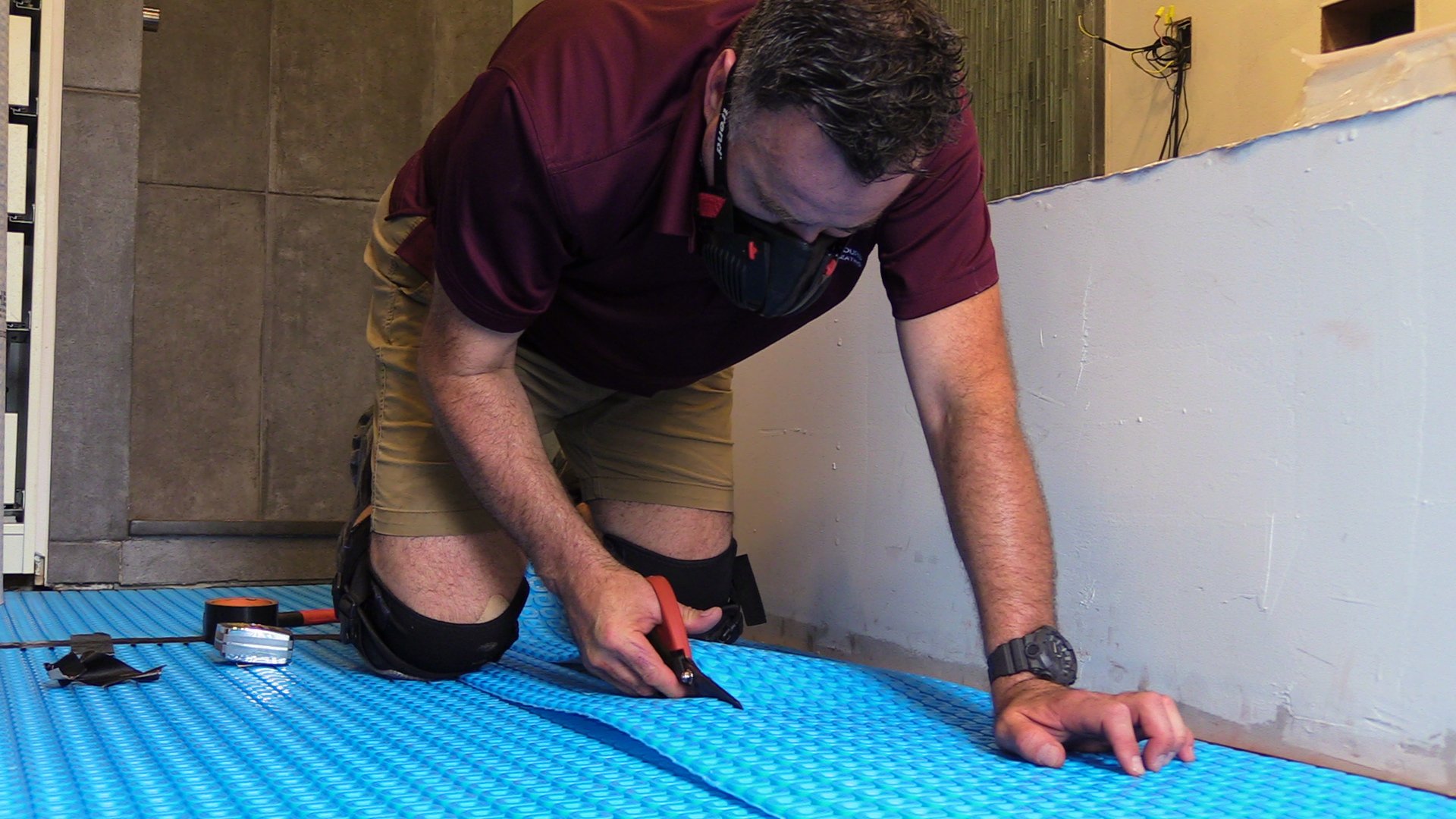
In This Article
Cracked tile is one of the most frustrating and costly problems in home flooring. Whether you’re upgrading a bathroom, remodeling a kitchen, or building new, cracked ceramic or porcelain tile can ruin the appearance of your space and lead to expensive repairs. The good news? You can prevent tile cracks—especially when installing radiant floor heating—by using the right materials and installation techniques.
Below, we’ll explain the main causes of cracked tile, how radiant heating fits in, and why uncoupling membranes like the Prodeso® system are critical for long-term durability.
What Causes Tile Floors to Crack?
Cracks in tile are almost always due to movement—either in the subfloor, mortar, or finished tile itself. Here are the top causes:
Unstable or improperly prepared subfloor: If your subfloor isn’t level, clean, and structurally sound, tile is more likely to crack over time.
Uneven mortar application: Gaps under the tile reduce support and can lead to shifting or cracking.
Insufficient expansion joints: Tile needs space to expand and contract. Tight grout joints don’t allow for this movement, increasing the risk of cracks.
Foundation movement: As homes settle, subfloors can shift. If the floor doesn’t flex with the movement, tile cracks or pops loose.
Concrete subfloor cracking (reflective cracking): This is a major issue when laying tile directly over slab. As the concrete shifts or cracks, the break reflects into the tile above—unless an isolation membrane is used.
How Does Radiant Floor Heating Affect Tile?
Radiant electric floor heating systems, like TempZone™ cable or mats, create consistent warmth under your tile—but they also slightly expand and contract during heating cycles. Without the proper materials in place, this subtle movement can contribute to stress on your tile.
To protect both your tile and your heating system, installers should always use a crack isolation or uncoupling membrane when placing radiant floor heating over concrete or wood subfloors.
Why Use a Crack Isolation Membrane?
One of the best ways to prevent cracking is to include an uncoupling and crack isolation membrane, like the Prodeso® Membrane. This innovative underlayment solves multiple issues:
Prevents reflective cracking: Absorbs subfloor movement and disperses stress to reduce tile damage.
Supports floor heating: Securely holds heating cables in place for fast, code-compliant installs.
Enables single-day installation: Lay membrane, embed cable, and install tile all in one workflow.

The Prodeso® membrane is made from polypropylene with square reliefs that allow thinset to lock in tile securely. Its structure provides just the right amount of flex between subfloor and surface—so instead of tile cracking, any stress is absorbed or redirected safely.
Installing Tile with Radiant Heating and a Membrane
A typical install with radiant heat and Prodeso® membrane looks like this:
Prepare and clean subfloor
Apply thinset adhesive
Roll out and embed Prodeso® membrane
Insert TempZone™ heating cable into membrane channels
Apply unmodified thinset
Set tile and spacers

The entire process is streamlined and doesn’t require curing between steps—making it fast and efficient for homeowners or pros.
Why It’s Worth It
According to HomeAdvisor, cracked tile repairs cost between $245 and $545 on average. By adding a membrane during installation, you reduce the risk of damage and ensure your investment in beautiful tile and cozy in-floor heating is protected.
FAQs
Do you need an uncoupling membrane with radiant floor heating?
Yes. An uncoupling membrane like Prodeso® helps prevent tile cracks and provides a secure base for heating cables.
Can radiant heat cause tile to crack?
Not if properly installed. Cracking usually results from subfloor issues or skipped steps like underlayment. A membrane ensures safe heat expansion and stress absorption.
What type of tile is best with radiant heating?
Porcelain and ceramic tiles work best due to their heat conductivity. Always check manufacturer specs to confirm compatibility.
Can you install radiant floor heat over concrete?
Yes, but never directly. Always use a thermal break (like ThermalSheet) and an uncoupling membrane to prevent heat loss and reflective cracking.
Conclusion: Protect Your Tile—Start with the Right Layers
If you’re installing radiant floor heating under tile, don’t skip the membrane. A system like Prodeso® adds stability, protects your tile, and helps your heating system perform as designed.
For more support, visit warmlyyours.com or call (800) 875-5285 for expert help. Our team is here 24/7 to guide you from planning through installation.
Have Questions About Your Project?
Our team of Radiant Experts is ready to help!
Comments
Stay Updated
Get the latest radiant heating news and tips delivered to your inbox.




We have had marble around a tub shower installed by Best Tiler Castle Hill guys and on the floor and other walls in that room for 27 years and it is the easiest bathroom to care for we have other than the acrylic one in the attic!. The grout between the marble tiles is very fine and the same color as the main one in the marble has never got any mildew on it and we rarely wipe it down between showers and only give it a monthly clean. We also have the same tile on the floor of another bathroom and mosaic marble on the shower floor in that room. That mosaic does get dirty from feet and needs cleaning weekly but the ceramic tile grout around the walls of the shower gets mildew on it at the drop of a hat despite wiping it down after every use with a towel. Give me the larger (12″ by 12″) marble tiles any day for maintenance. I am not sure how to add a photo otherwise I would!
That's a great point and definitely something to keep in mind when selecting a tile floor. The smaller mosaic tiles will certainly present more grout-line volume per sq. ft. than larger format tiles which can increase cleaning times.
We want to install a zero entry shower in our new home build, and was hoping we could take the floor tile that will be in the main part of the bathroom and carry it into the shower. Are we limited on the size of the floor tiles we can use? If the main tiles are a different shape than squared off edges, is that going to be a problem?
We specialize more in electric floor heating systems (including heating systems for curbless or zero entry showers if you're interested for your new home) but since a lot of our projects do involve tile, we can provide a bit of insight. As far as the size of the floor tiles, there isn't really a set standard for zero entry showers but larger format tiles (basically anything larger in either dimension than 12" x 12") can run the risk of being a bit more slippery when they're wet and very small tiles (2" x 2" or smaller) can be too small for use with some uncoupling membranes like the Prodeso Cable Installation Membrane we sell. As far as the shape of the tile edge is concerned, you might run into issues depending on the slope of your shower since the tiles will need to be slightly angled toward the drain if they have an atypical edge profile. Hope that helps!